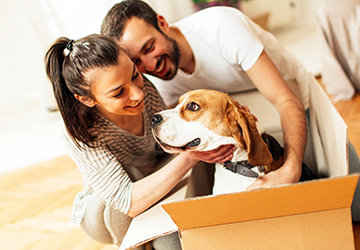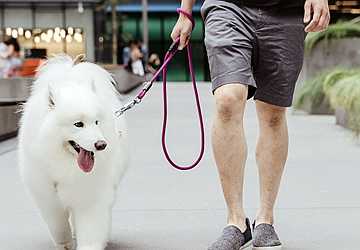How to Help Your Pet Adapt to a New Home
While adding a new pet to the family is excellent, it can also be stressful for you and your four-legged friend. Just like people, pets also need time to adapt to new things. Whether you adopted a rescue animal or welcomed a new puppy or kitten, read on for tips to help your pet adjust smoothly to his new home.

Tips on how to help your pet feel at home instantly
Are you worried that the furball you are trying to introduce to your family will become scared, frightened, and not adjust well? Then follow these simple tips to make the transition to your home more accessible:
1. Create a safe space
When you bring your pet home, you must ensure he has a safe and comfortable resting place when he becomes overly excited or stressed. It may be a corner of the living room or a corner of the guest room. Create a space around them filled with things they know and love, like their bed, toys, and blankets. Ensure it doesn't pose a hazard, and keep food and water nearby. Such a home gives pets a sense of security when moving to a new location.
2. Stick to routine
Pets rely on consistency, so create as much structure as possible during transitions. Feed it at the right time daily, take regular walks or plays, and establish a bedtime routine. Routine in daily life will help your pet feel safer and more comfortable in their new environment. If you adopt an older pet, try to learn about their habits in their previous home and gradually transition them into your home.
3. Gradually Transition to a New Environment
Every pet owner wants to let their pet see every corner of their new house; however, this can easily lead to overstimulation and anxiety. Instead, teach them to explore one room at a time and let them explore at their own pace. Supervise and gently encourage them to explore, but don't force them to jump over obstacles. As they become more confident, they continue expanding their territory until they are satisfied with the house.
4. More pats on the back
When your pet exhibits good behaviour during the adjustment period, give them the love, attention, and praise they deserve. Reinforce their positive feelings about their new home with treats, toys, and affection. If your animal has anxiety issues or other stressful situations, care for them by providing comfort and security, but don't stress them too much. Positive reinforcement is vital in building trust and strengthening the human-animal bond.
5. Be patient and understanding.
Adapting to a new place can be challenging for animals. Therefore, patience and determination are essential. Let them get used to the new environment you provide them, and don't expect them to feel comfortable immediately. Some pets may experience terminal sedation for up to a week or two.
Therefore, you should remember that setbacks may occur. Stay calm and positive, and always remember that building trust is a process that cannot happen overnight.
6. Gradually introduce other pets.
If you have other pets at home, gradually introducing them to your new four-legged friend is essential. First, let them smell each other with the door closed and then get to know each other through smell. Then, when you're ready, start small and introduce your child to a controlled environment, such as keeping him on a leash or using a baby gate. Please pay attention to how they interact and know how to handle potential conflicts.
7. Provide a quiet environment.
Pets are easily affected by their surroundings, so keeping the environment calm and quiet during the acclimation period is essential. Avoid loud noises, sudden movements, or other disruptive activities that frighten or stress your pet.
Creating a cosy atmosphere with soft lighting, calming music, and nice bedding is essential. Please note: If you have visitors, ask them to approach your pet cautiously and not invade his privacy. A peaceful atmosphere is vital to helping your pet feel more comfortable and safe as they settle into their new home.
8. Set clear boundaries
Although you may want to embrace new people, setting boundaries first is essential; this can avoid chaos and create a sense of structure. Make it clear whether they can access certain parts of the house, where they can sleep, and what areas are off-limits. Provide positive encouragement to guide lousy behaviour in the right direction.

Consistency is most important; therefore, every family member must follow the same rules and enforce boundaries with one voice. When specific rules and regulations are implemented, pets become more confident and less anxious in new situations.
Conclusion
You must be patient, consistent, and loving for your pet to adjust to its new home. You can help achieve this if you try to create a safe space, stick to your pet's daily routine, slowly introduce him to his environment, give him positive reinforcement, be patient and understanding, and many other things; your furry friend will feel at home in no time. Remember, every pet has a unique personality. Therefore, you must be prepared to modify these tips to meet your pet's specific needs. Over time, and with patience, your pet will undoubtedly become part of the family.




